Mold Flow Analysis and Method of Injection Molding Technology of Safety Belt Outlet Cover †
Abstract
1. Introduction
2. Description of Seat Belt
2.1. Product Information
2.2. Thickness
3. Process Setting
3.1. Grid Statistics
3.2. Material Data
3.3. Gate Position
4. Results
4.1. Fill and Pressure Protection
4.1.1. Filling Time
4.1.2. Flow-Front Edge Temperature
4.1.3. V/P Switching Pressure
4.1.4. Injection Position Pressure
4.1.5. Mold-Locking Force
4.1.6. Shear Rate
4.1.7. Shear Stress on Wall
4.1.8. Air Cavity
4.1.9. Fusion and Connection Marks
4.1.10. Material Flow Rate
4.1.11. Freezing-Layer Factor
4.2. Cooling
4.2.1. Coolant Temperature and Flow Rate
4.2.2. Part Temperature
4.2.3. Mold Temperature Difference
4.3. Deflection
4.3.1. Analysis of Warping Deformation
4.3.2. Differential Action Cooling
4.3.3. Differential Shrinkage
4.3.4. Directional Effect
5. Conclusions
Author Contributions
Funding
Institutional Review Board Statement
Informed Consent Statement
Data Availability Statement
Acknowledgments
Conflicts of Interest
References
- Li, D.; Li, B.; Xie, X.; She, C.; Zhao, T. How to Make a Safety Belt Outlet Cover. Chongqing Yanfeng Adient Automotive Components Systems Co., Ltd. Patent no. 17413868, 16 April 2019. Available online: https://www.xjishu.com/zhuanli/29/201821513707.html (accessed on 25 April 2024).
- Qin, Y.; Ning, J.; Wu, T.; Xie, J. Analysis of the Current Status of Car Seat Belt Research. Xinjiang Agric. Mech. 2022, 25–27. (In Chinese) [Google Scholar] [CrossRef]
- Zhou, L.; Tang, S.; Huang, T.; Gao, G. Study on the stability of V/P switching position control of injection molding machine. Mold Ind. 2022, 11, 15–21. (In Chinese) [Google Scholar]
- Poszwa, P.; Brzęk, P.; Gontarev, I. Influence of processing parameters on clamping force during injection molding process. In Advances in Manufacturing II. MANUFACTURING 2019; Springer: Cham, Switzerland, 2019; pp. 287–299. [Google Scholar] [CrossRef]
- Shan, Z.; Hu, X.; Dai, H.; Zhang, N. Quantitative study on weld marks of injection molded products based on image processing technology. Mold Technol. 2022, 3, 25–29. (In Chinese) [Google Scholar]
- Kitayama, S.; Tsurita, S.; Takano, M.; Yamazaki, Y.; Kubo, Y.; Aiba, S. Multi-objective process parameters optimization in rapid heat cycle molding incorporating variable packing pressure profile for improving weldline, clamping force, and cycle time. Int. J. Adv. Manuf. Technol. 2022, 120, 3669–3681. [Google Scholar] [CrossRef]
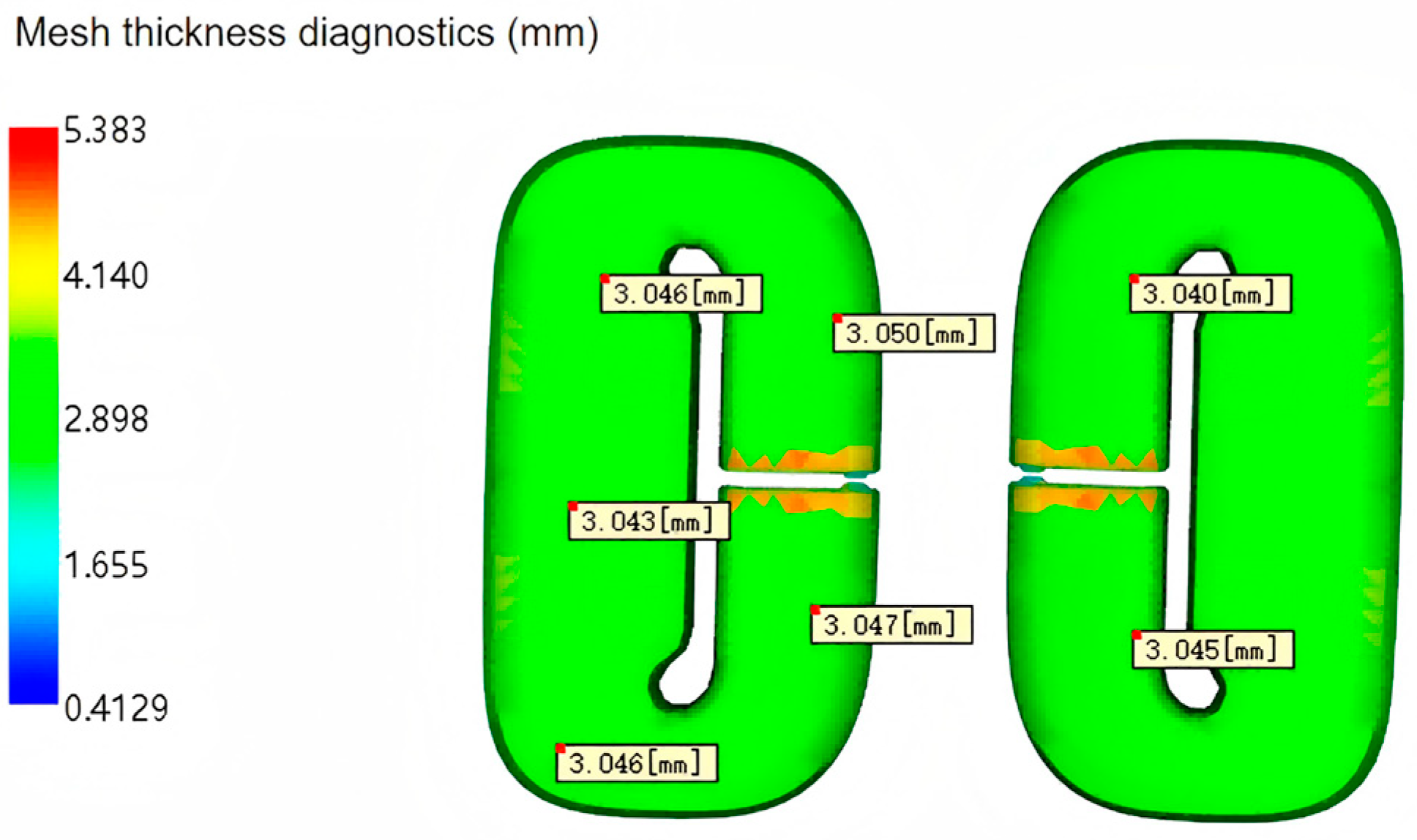
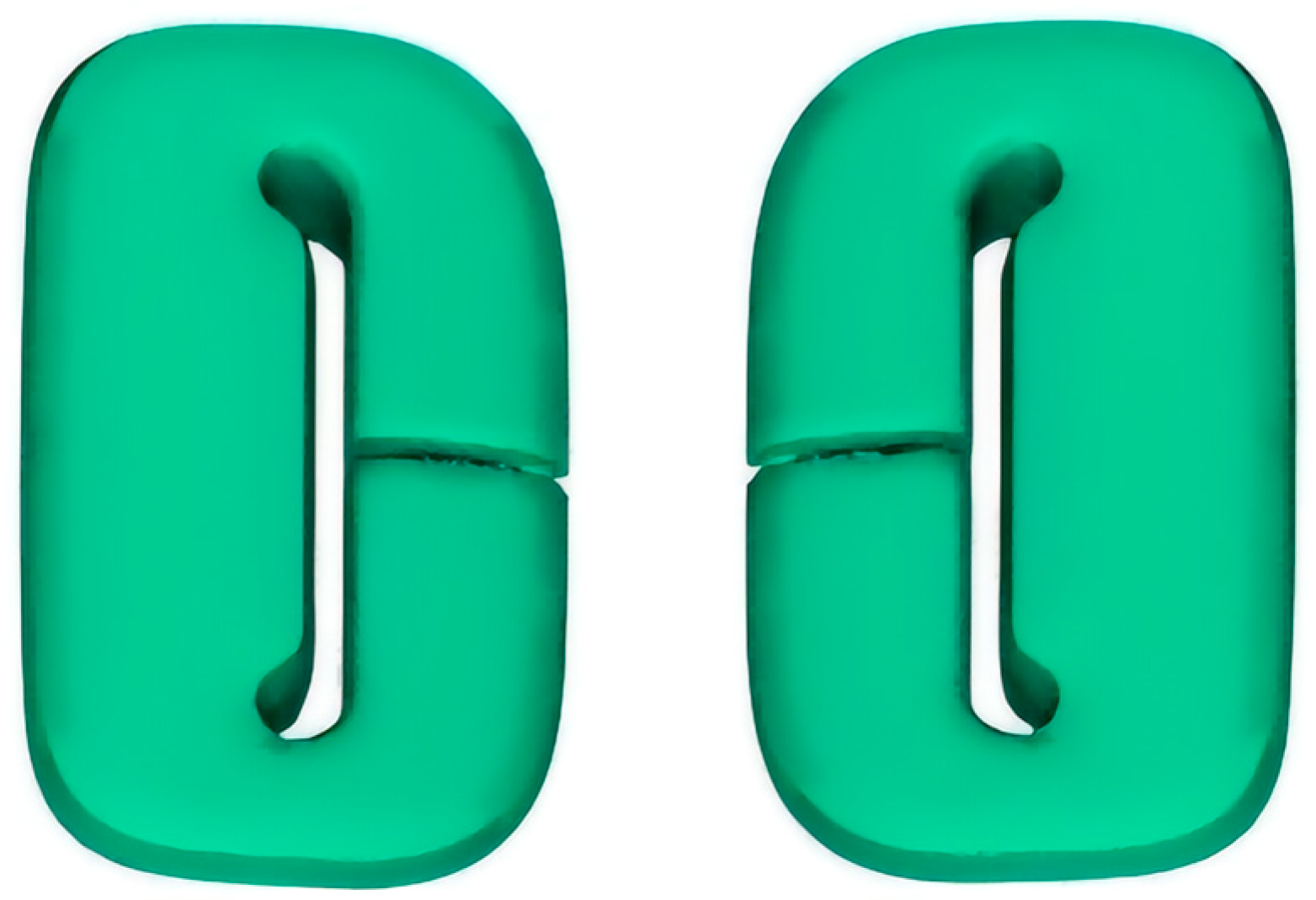

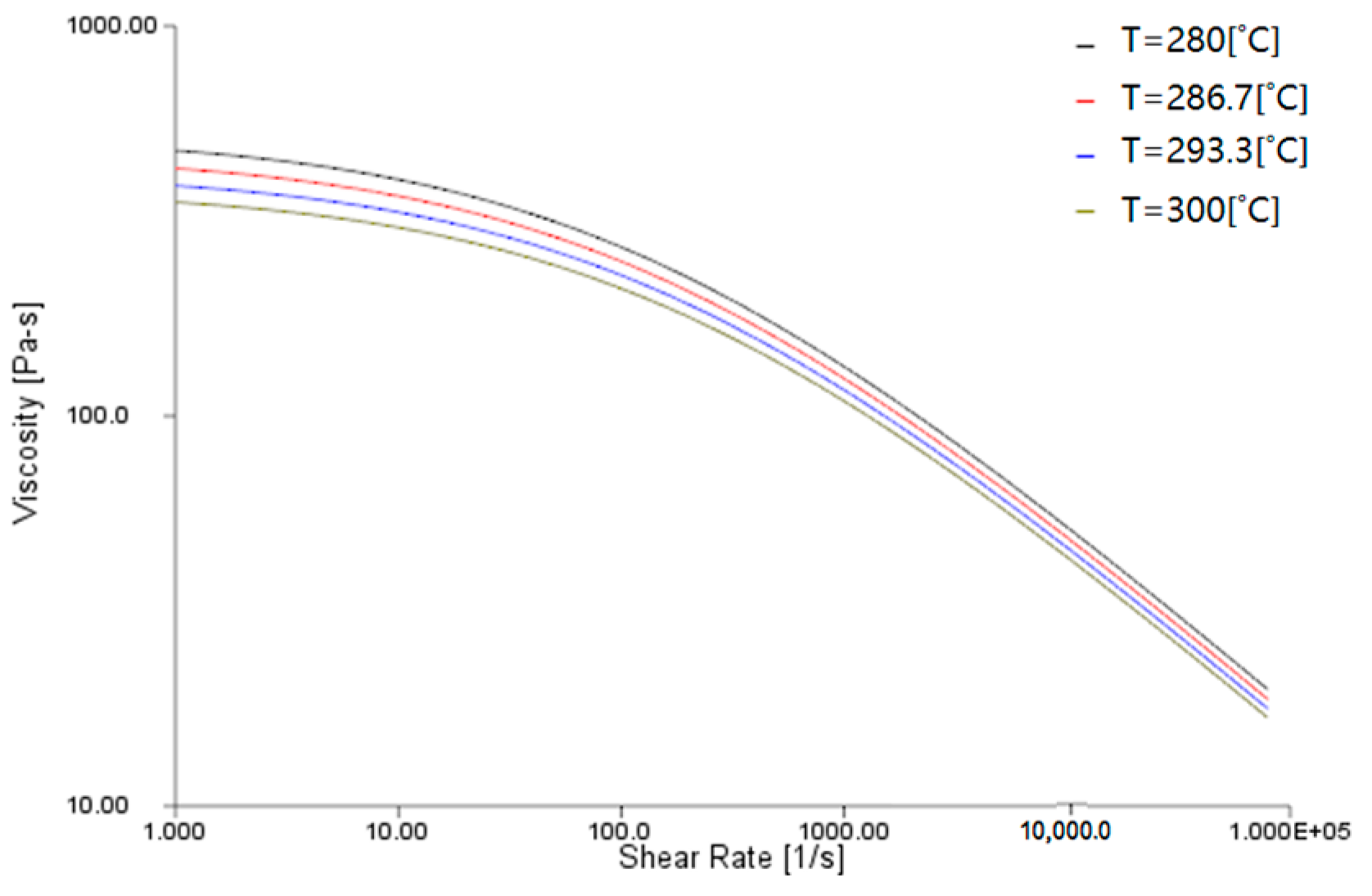
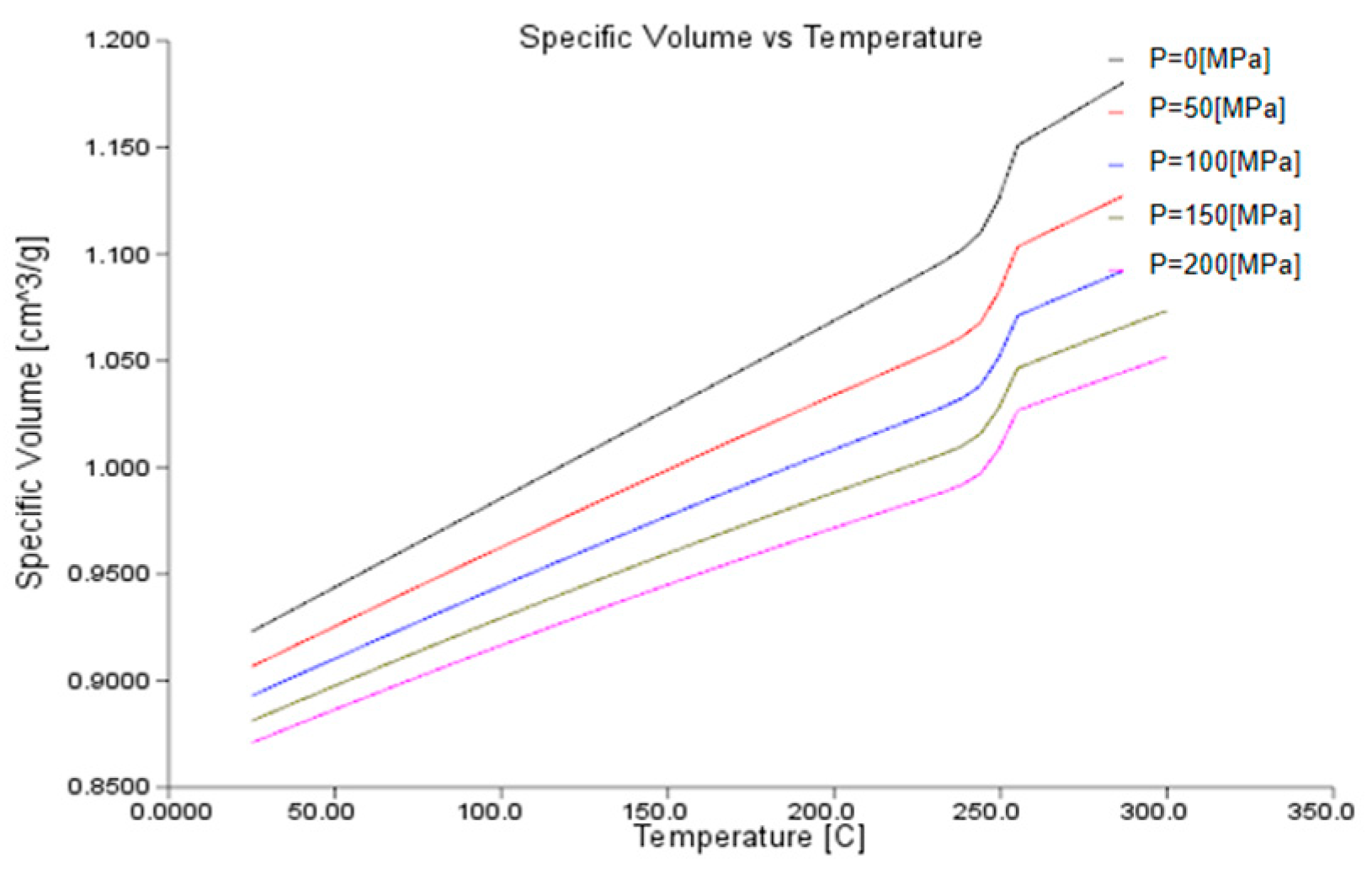

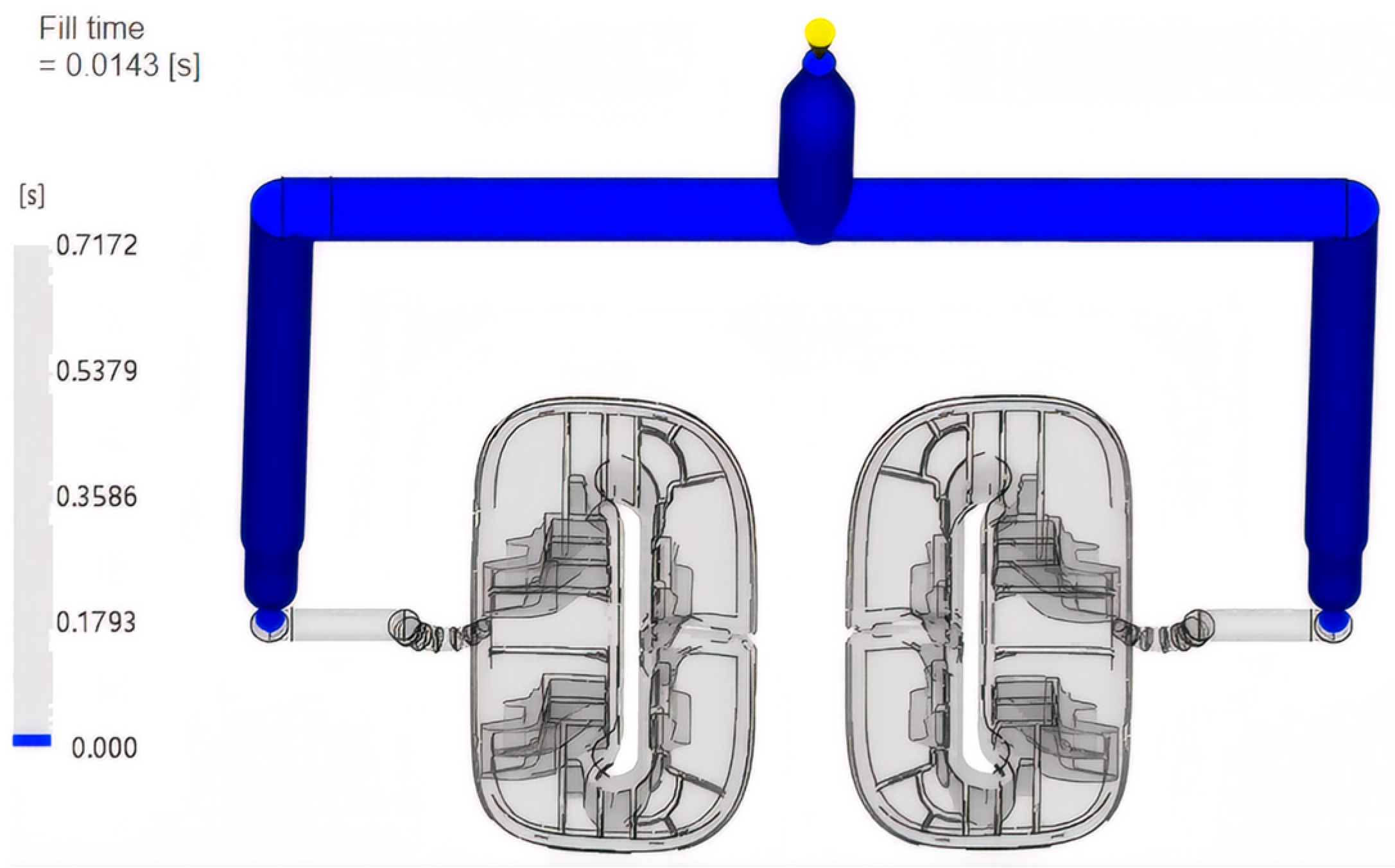
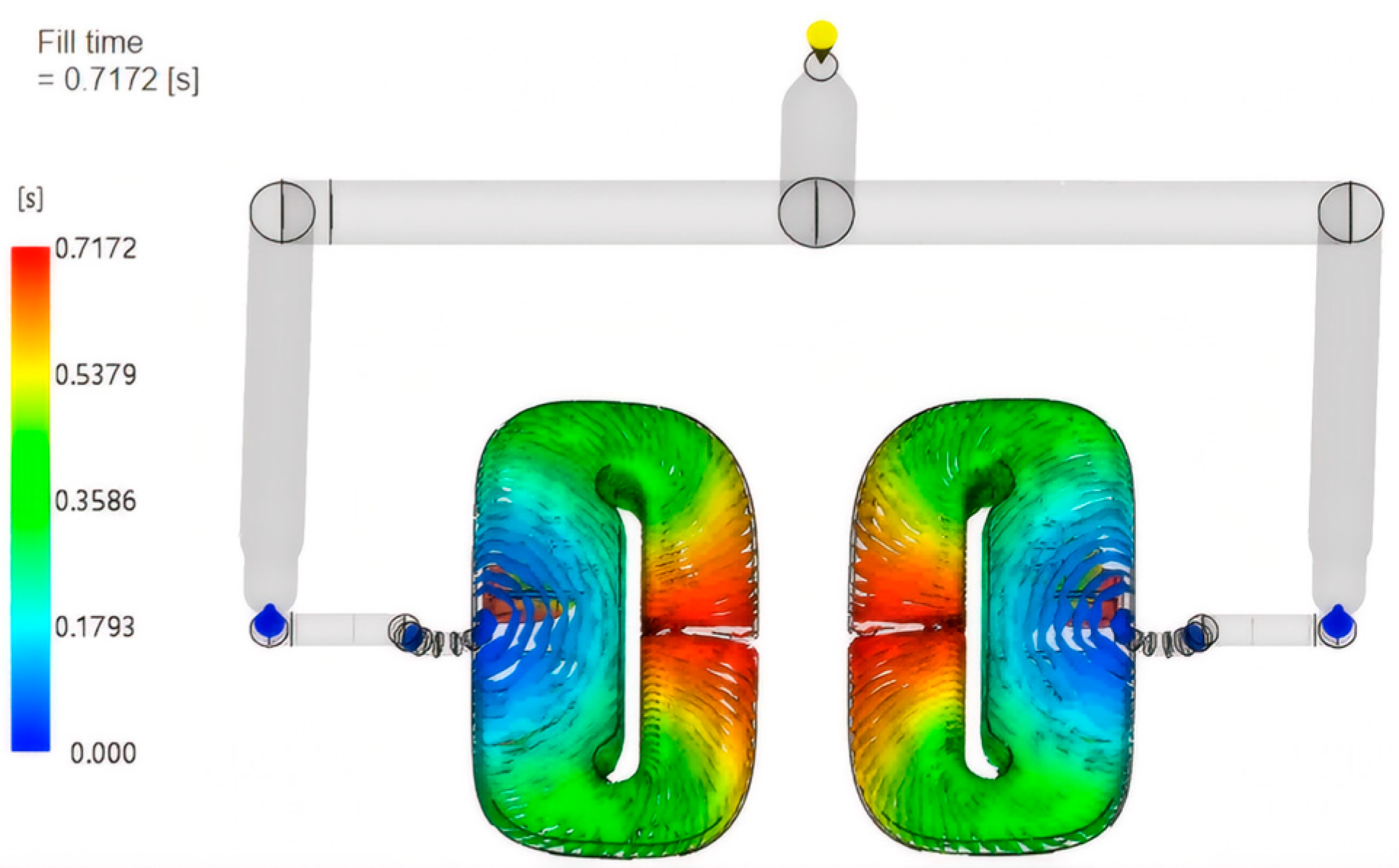
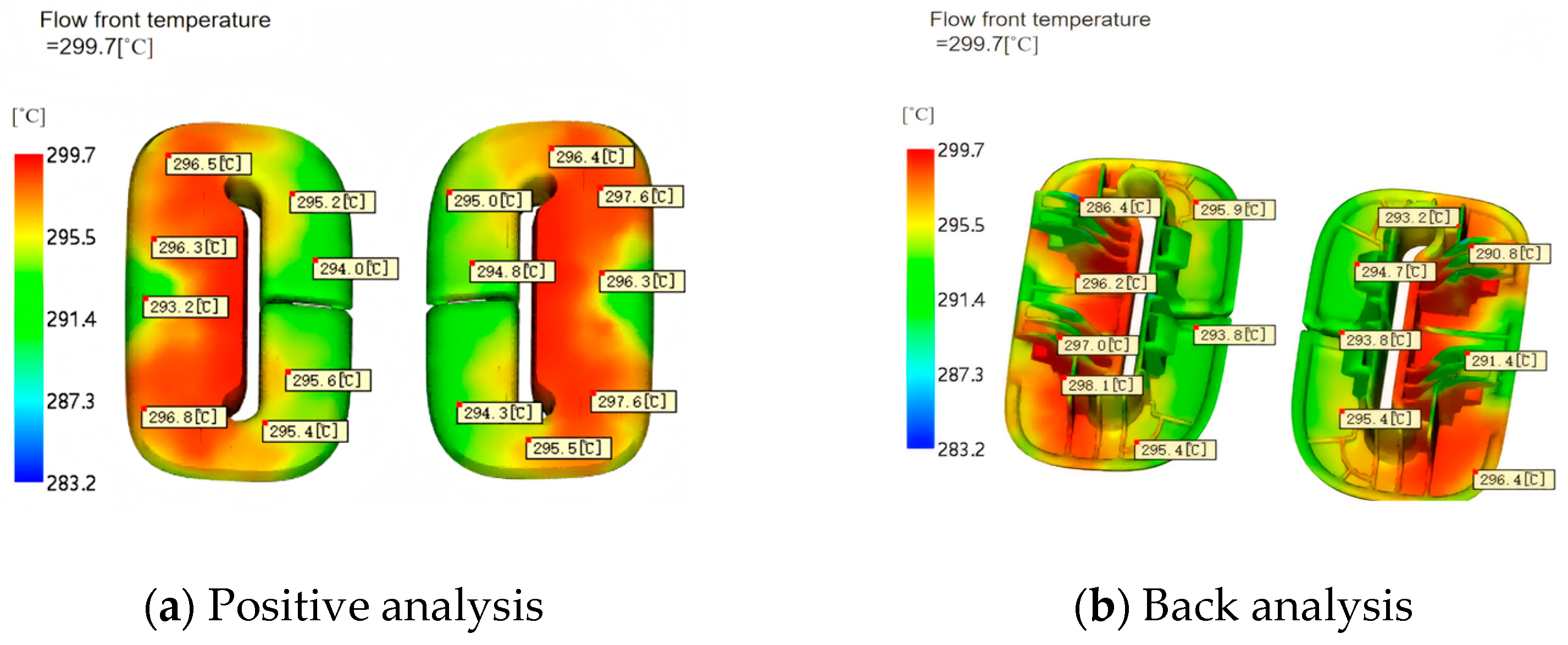
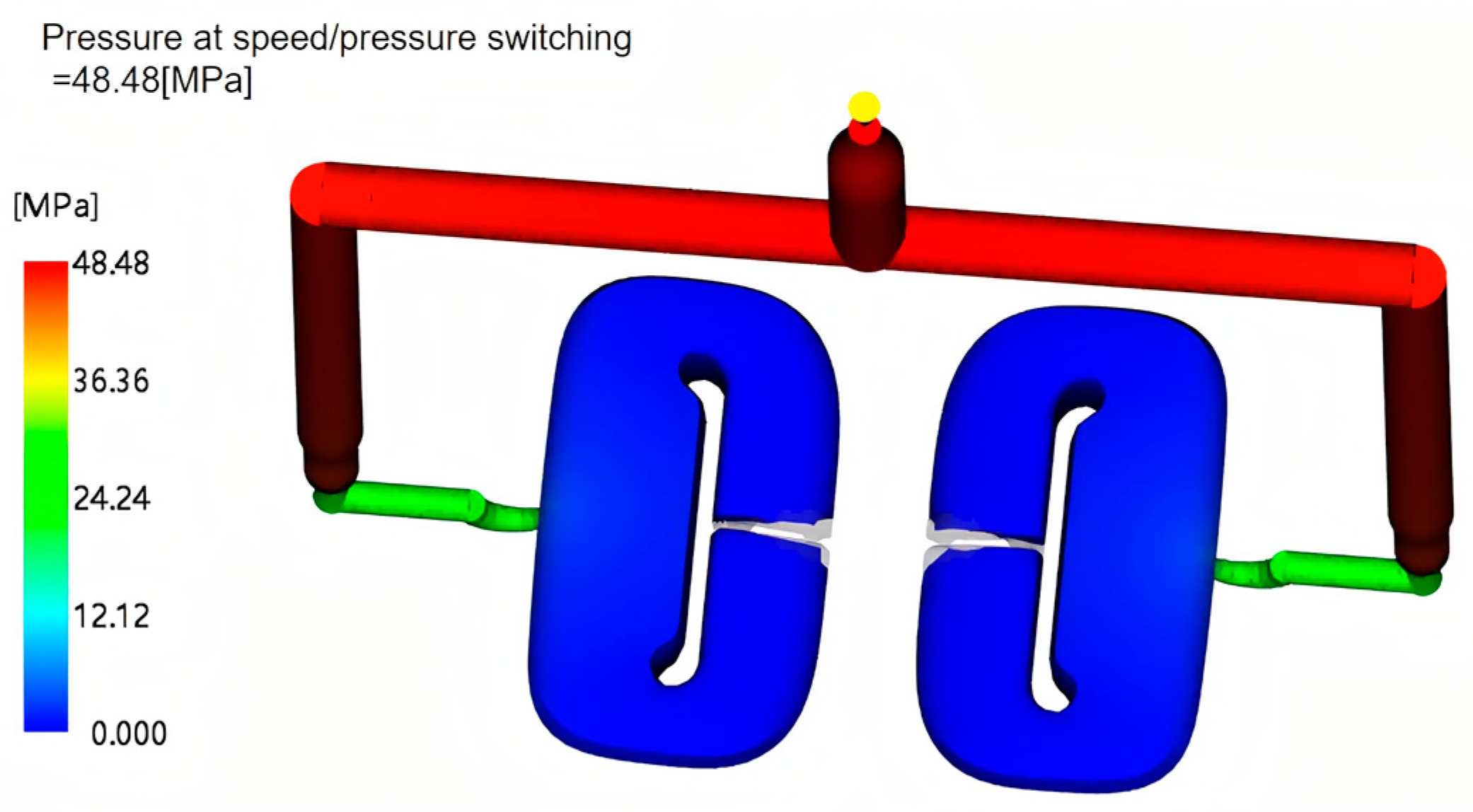
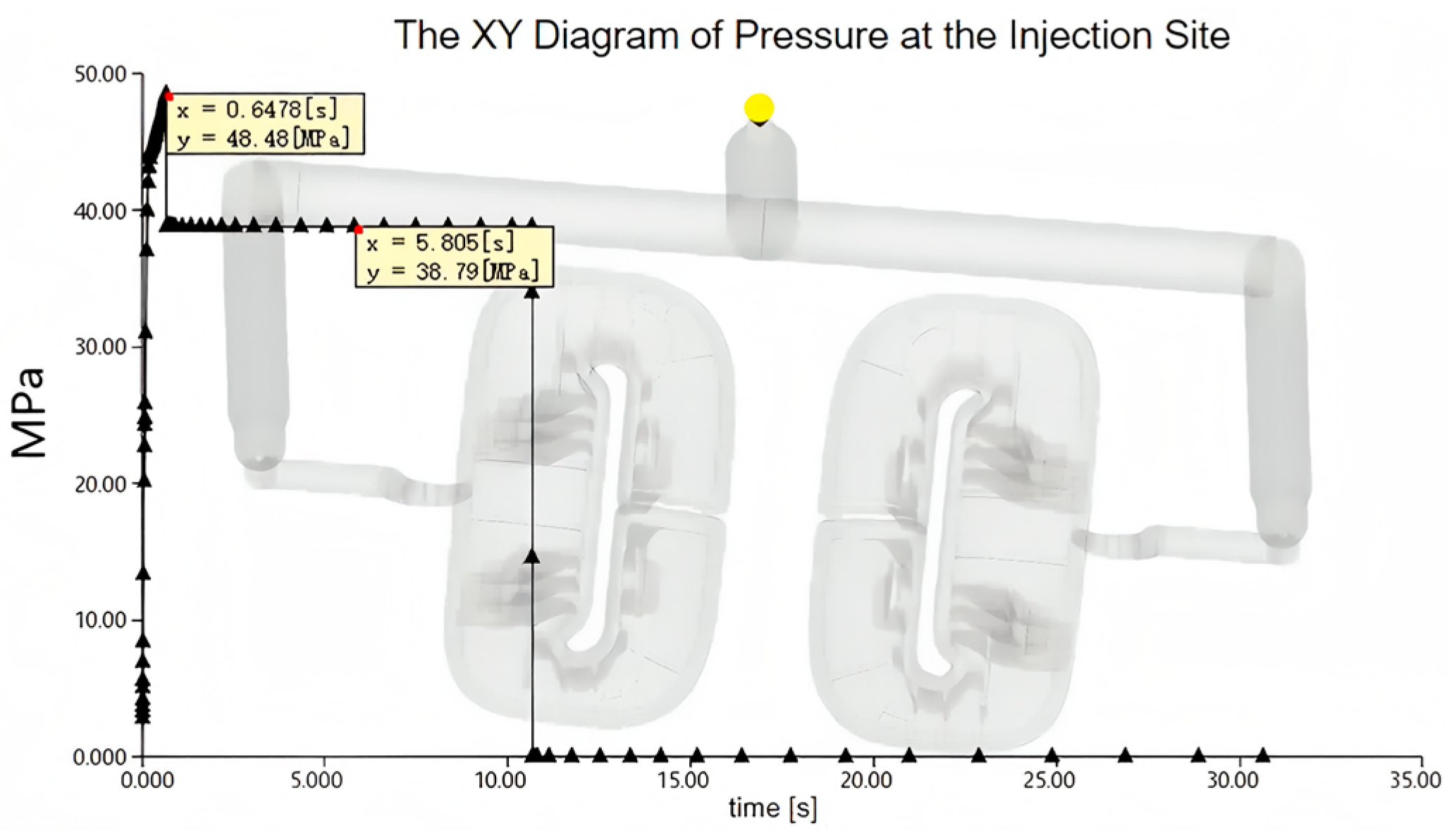
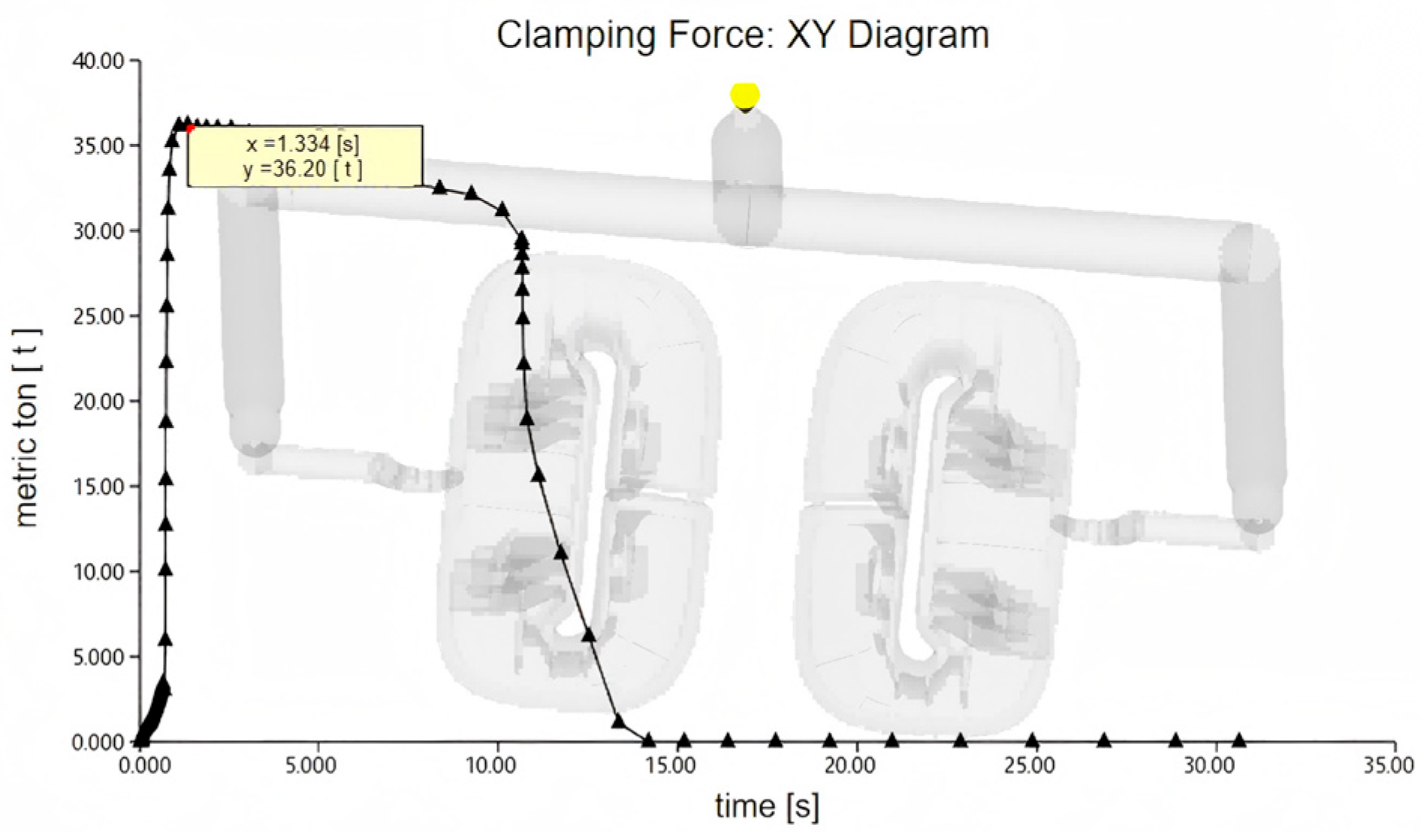
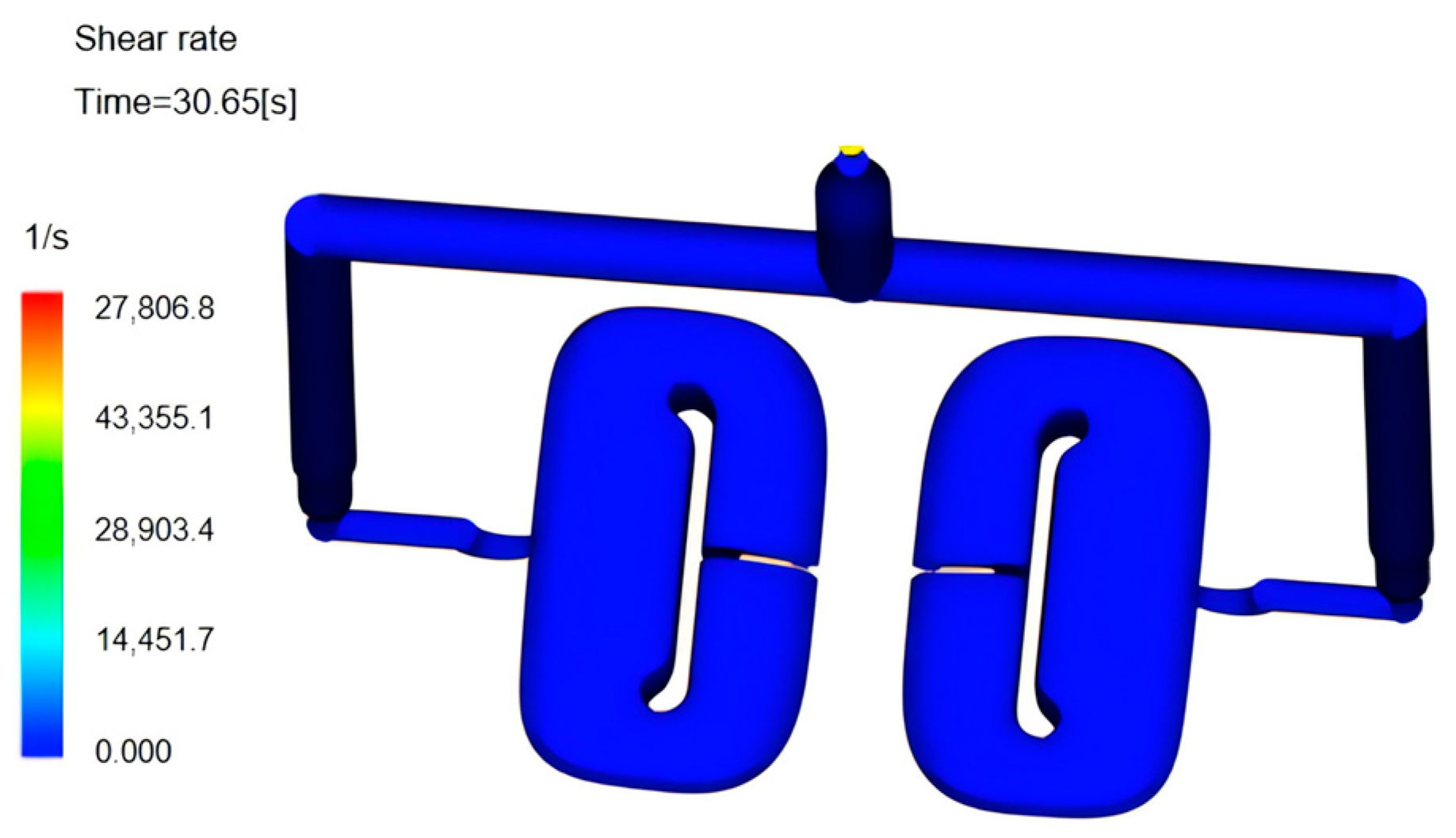
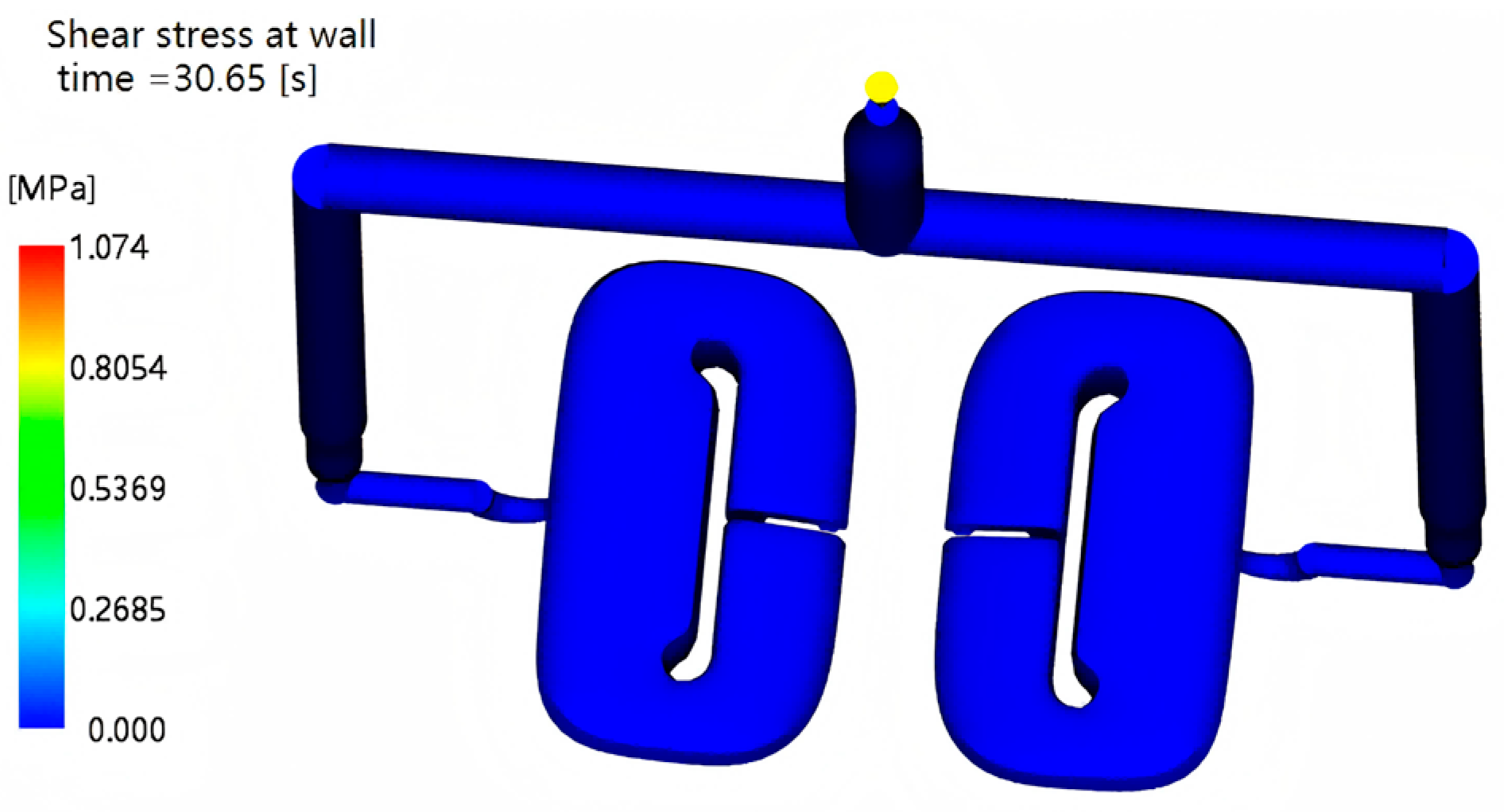
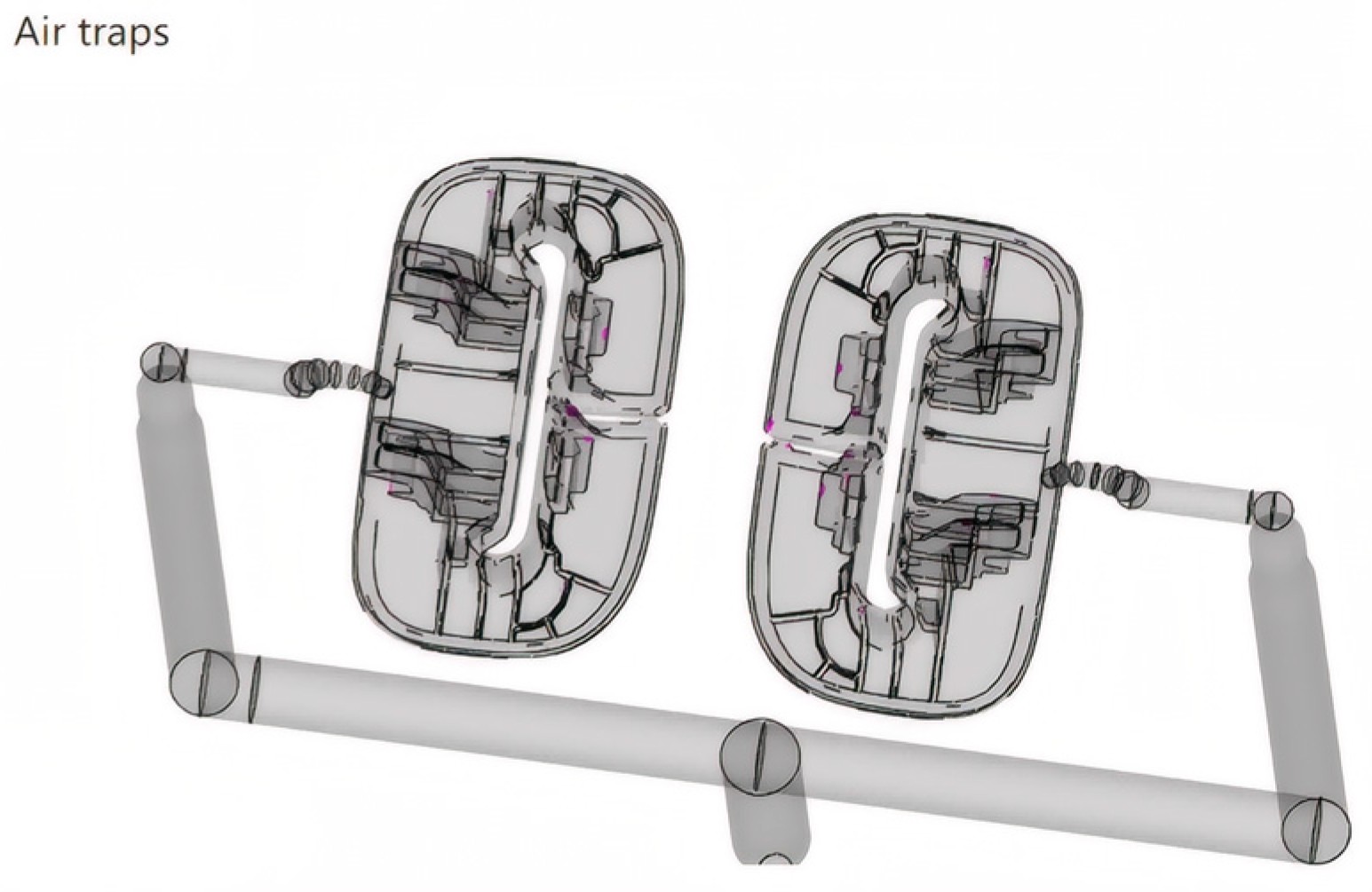
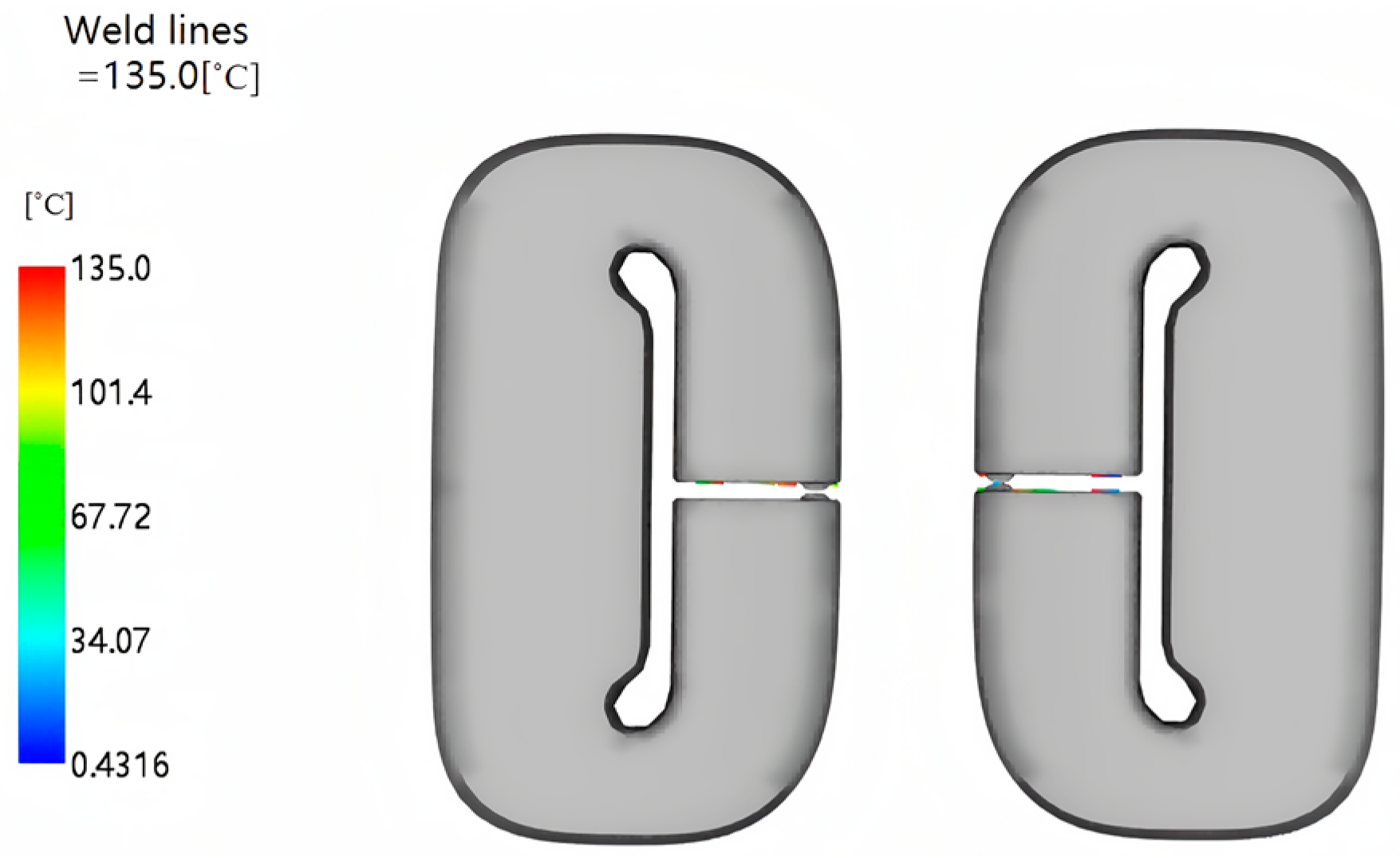
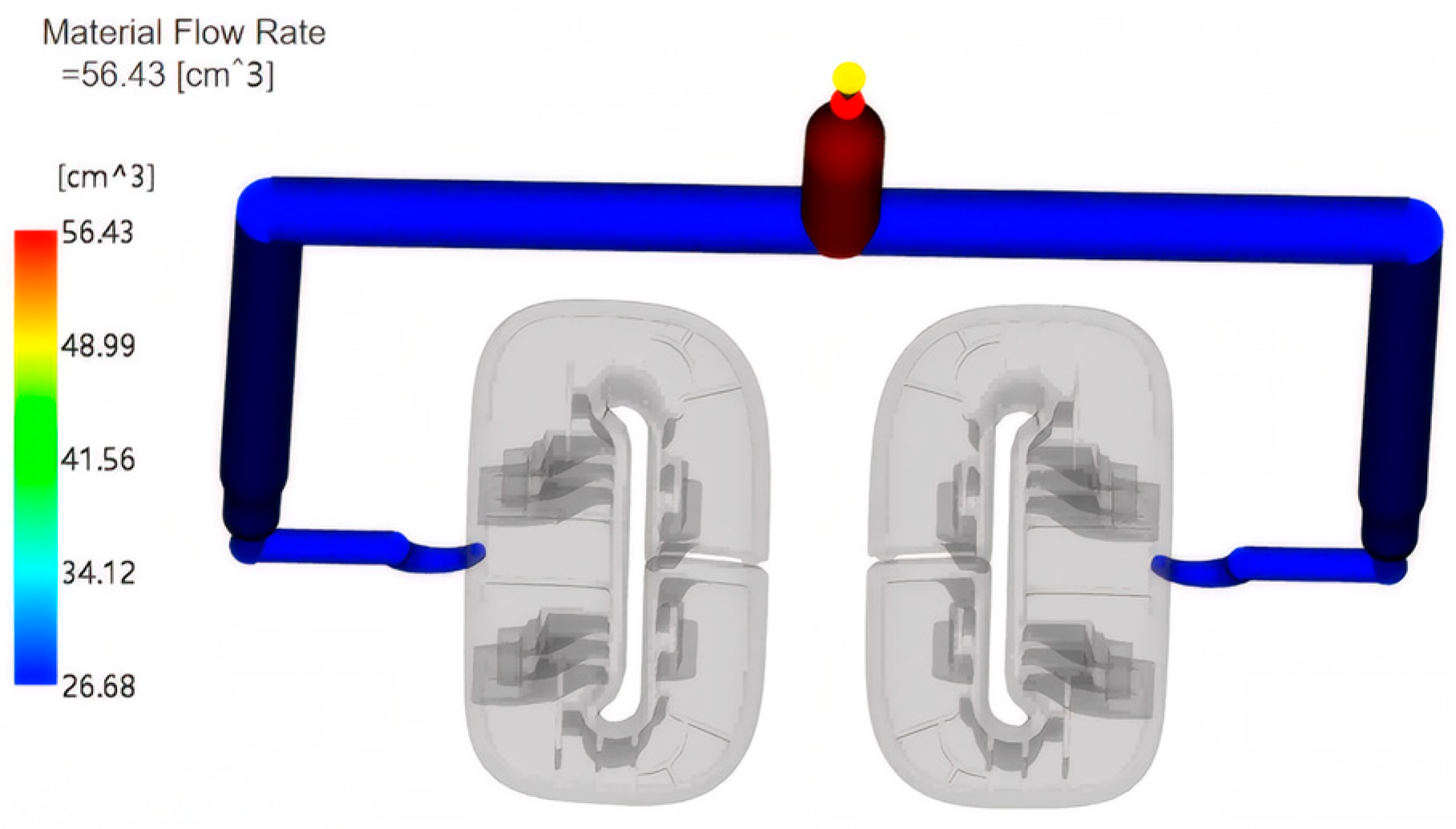
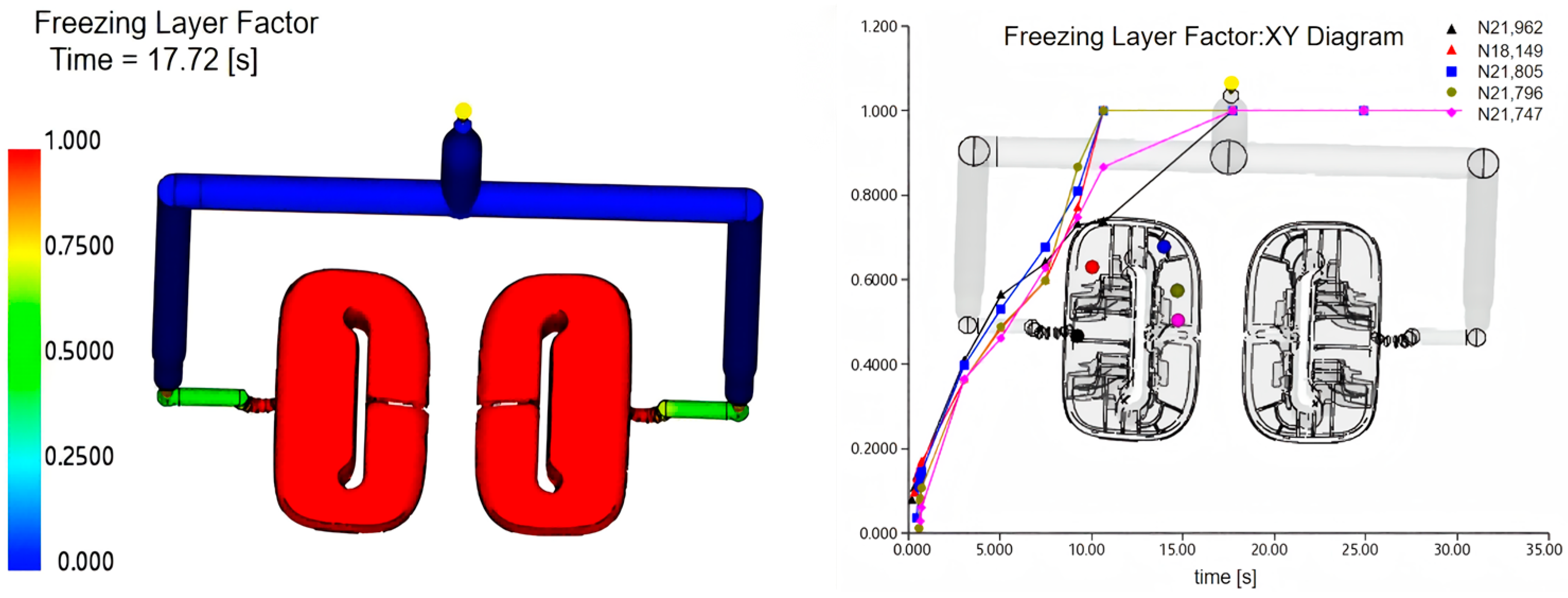
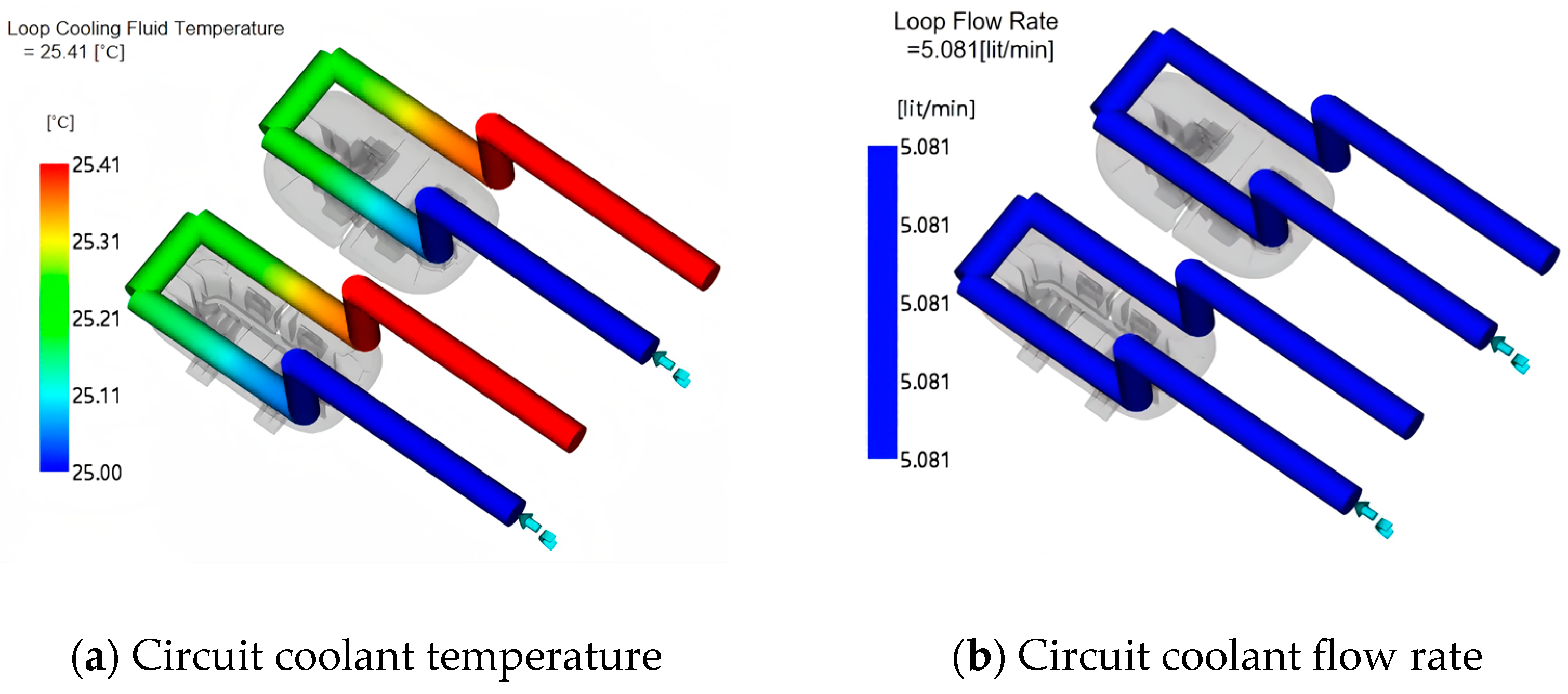
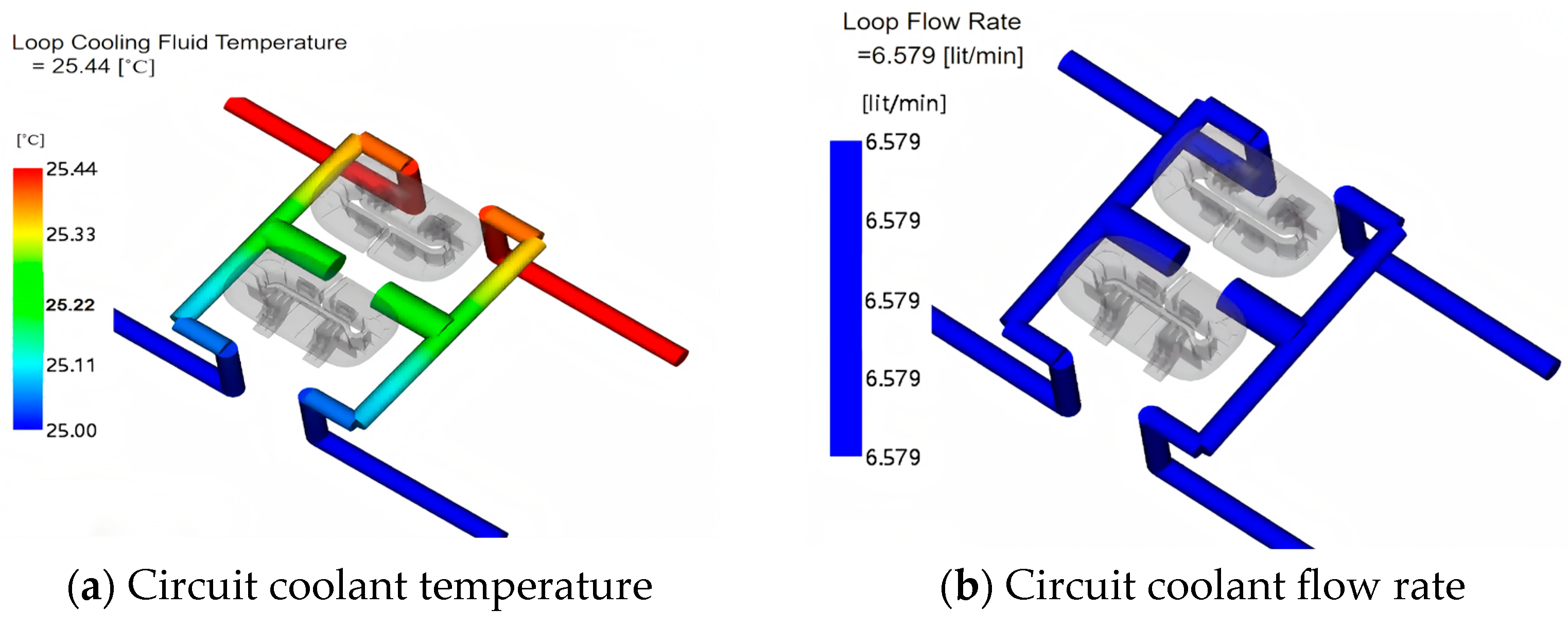
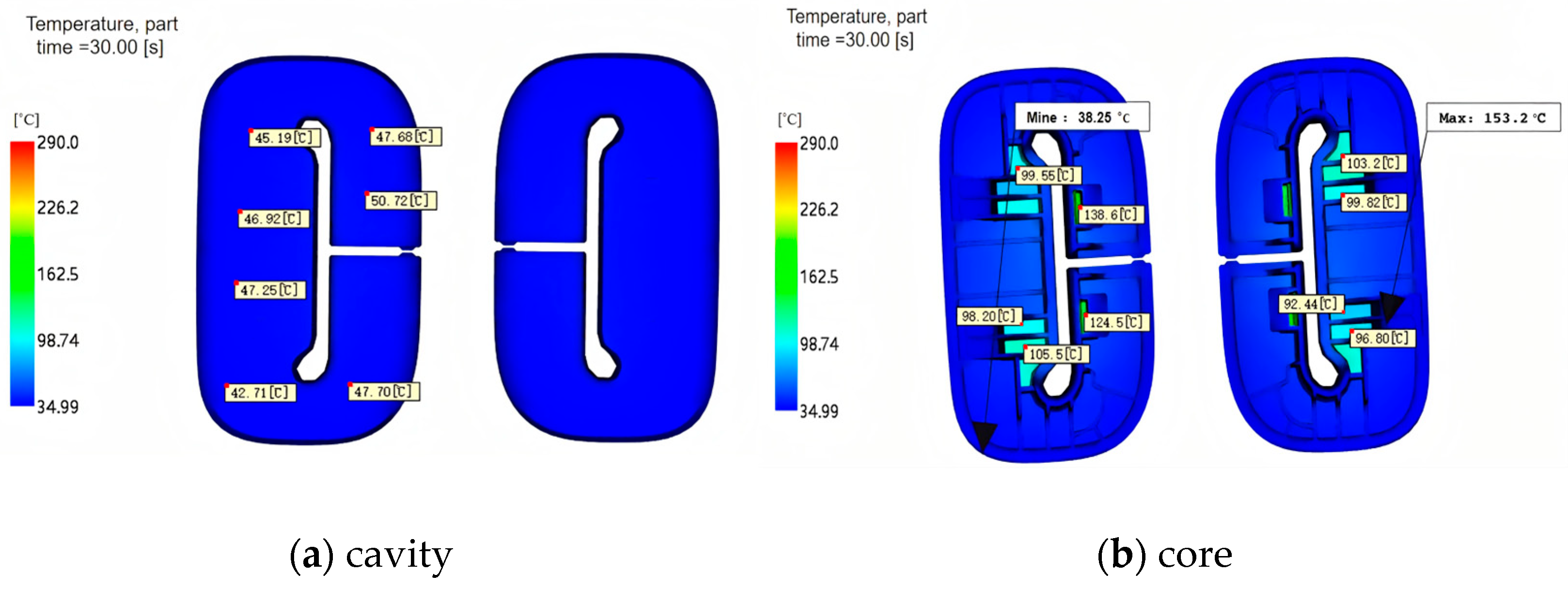



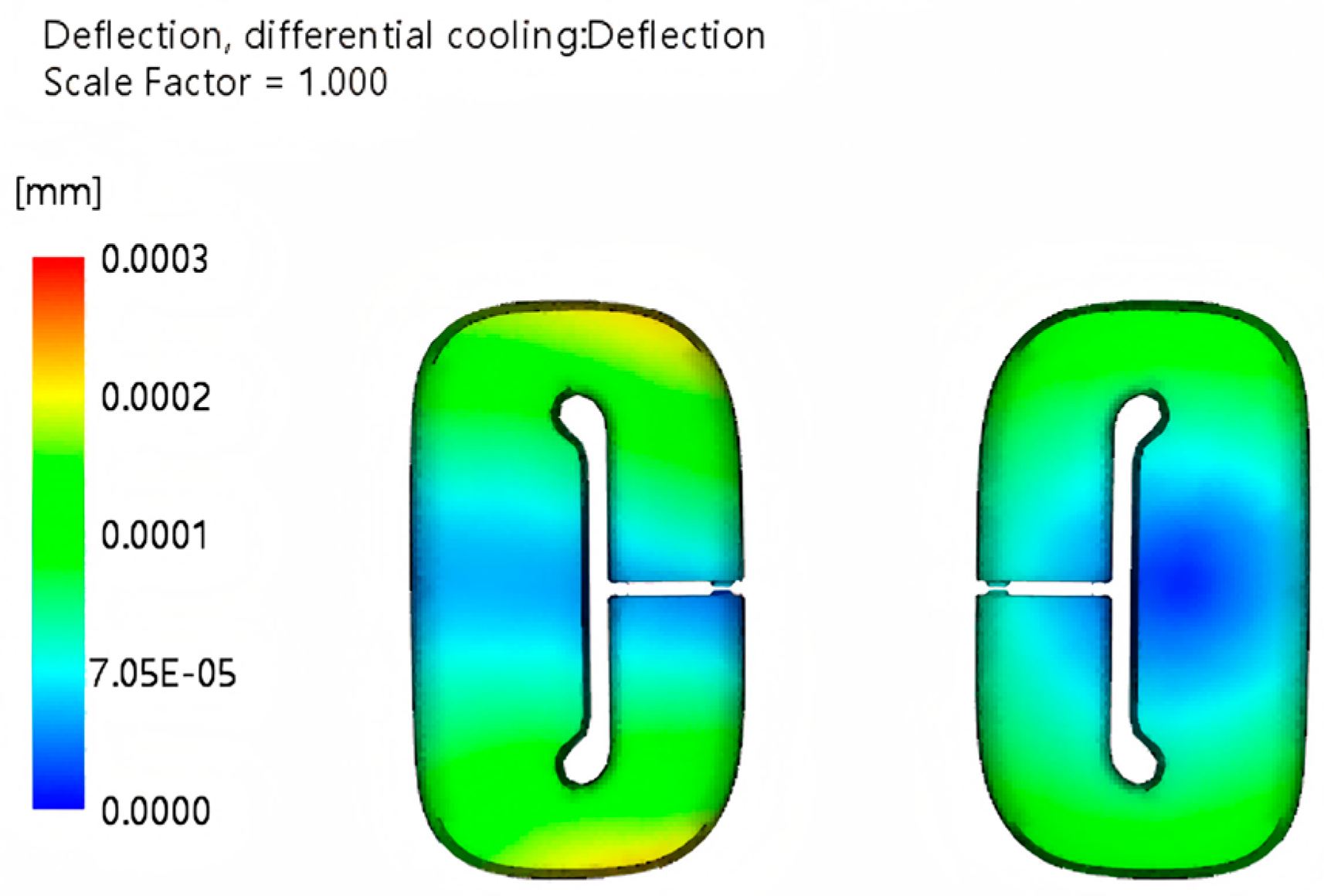


| Product Information | Data |
|---|---|
| Volume | 48.5852 cm3 |
| Thickness | 3.0 mm |
| Weight | 42.54 g |
| Project area | 97.5637 cm2 |
| Material Type | Material Information | |
|---|---|---|
| Family name | Polyamides, (nylons, PPA) | |
| Trade name | AlOBK-S17 | |
| Manufacturer | Nanjing Julong Technology Co., Ltd. in Nanjing | |
| Family abbreviation | PA66 | |
| Material structure | Crystalline | |
| Data source | Moldflow Corporation: pvT-Measured: mech-Supplemental | |
| Date last modified | 6 February 2020 | |
| Date tested | 1 July 1996 | |
| Data status | Non-confidential | |
| Supplier code | NANLONG | |
| Fibers/fillers | Unfilled | |
| Mold surface temperature | 70 °C | |
| Melt temperature | 290 °C | |
| Mold temperature range (recommended) | Minimum | 40 °C |
| Maximum | 95 °C | |
| Melt temperature range (recommended) | Minimum | 280 °C |
| Maximum | 300 °C | |
| Absolute maximum melt temperature | 320 °C | |
| Ejection temperature | 220 °C | |
| Maximum shear stress | 0.5 Mpa | |
| Maximum shear rate | 60,000 per second | |
| Reference | Cross Section/Dimension (mm) |
|---|---|
| Manifold | Circular—12 mm |
| Hot runner | Circular—12 mm, valve—3 mm |
| Cold runners | U-shape—6 mm |
| Cold gate | Cashew gate—2.4 mm |
Disclaimer/Publisher’s Note: The statements, opinions and data contained in all publications are solely those of the individual author(s) and contributor(s) and not of MDPI and/or the editor(s). MDPI and/or the editor(s) disclaim responsibility for any injury to people or property resulting from any ideas, methods, instructions or products referred to in the content. |
© 2025 by the authors. Licensee MDPI, Basel, Switzerland. This article is an open access article distributed under the terms and conditions of the Creative Commons Attribution (CC BY) license (https://creativecommons.org/licenses/by/4.0/).
Share and Cite
Jia, H.; Yang, Y.; Li, Y.; Shu, C.; You, J. Mold Flow Analysis and Method of Injection Molding Technology of Safety Belt Outlet Cover. Eng. Proc. 2025, 98, 42. https://doi.org/10.3390/engproc2025098042
Jia H, Yang Y, Li Y, Shu C, You J. Mold Flow Analysis and Method of Injection Molding Technology of Safety Belt Outlet Cover. Engineering Proceedings. 2025; 98(1):42. https://doi.org/10.3390/engproc2025098042
Chicago/Turabian StyleJia, Hao, Yang Yang, Yi Li, Chengsi Shu, and Jie You. 2025. "Mold Flow Analysis and Method of Injection Molding Technology of Safety Belt Outlet Cover" Engineering Proceedings 98, no. 1: 42. https://doi.org/10.3390/engproc2025098042
APA StyleJia, H., Yang, Y., Li, Y., Shu, C., & You, J. (2025). Mold Flow Analysis and Method of Injection Molding Technology of Safety Belt Outlet Cover. Engineering Proceedings, 98(1), 42. https://doi.org/10.3390/engproc2025098042





